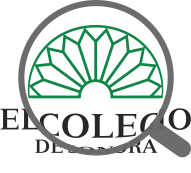Arquitectura de la Revolución: Simbolismo de las ciudades y obra pública (1915-1962)
No Thumbnail Available
Date
2002-05-01
Authors
Méndez Sáinz, Eloy
Journal Title
Journal ISSN
Volume Title
Publisher
El Colegio de Sonora
Abstract
This text deals with the process of national rebuilding which had to be undertaken by the new social contract on the ruins caused by the Mexican Revolution, particularly in the northwest of the country. Both the urban structure of the territory and the internal shaping of the centers of population in the early 21st century are understood to a large extent in virtue of the processes generated by the revolutionary movement. The new economic, social and cultural policies gave impetus to new settlements, others were consolidated and the great majority underwent major changes. Above all, during this period the towns in the agricultural valleys and irrigation districts were established. The guiding idea of this reflections assumes that the regimes arisen from the revolution materialized the system of symbols identified with the ideology of the emerging political class in the region, the towns and the architecture. This system gives new meanings to the space constructed. It is a process of changing meanings, a symbolization in accordance with the new social values, where architecture and city planning play a role in the shaping of the revolutionary experience through achieving creative symbolisms.
Este texto aborda el proceso de reconstrucción nacional que debió erigir el nuevo contrato social sobre las ruinas dejadas por la Revolución Mexicana, particularmente en el noroeste del país. Tanto la estructura urbana del territorio como la conformación interna de los núcleos de población de principios del siglo XXI se explican en buena medida en virtud de los procesos desatados a raíz de la gesta revolucionaria. Bajo el impulso de las nuevas políticas económicas, sociales y culturales surgieron nuevos asentamientos, otros se consolidaron y la inmensa mayoría sufrieron cambios sustanciales. Sobre todo, en este periodo se establecieron las ciudades de los valles agrícolas y distritos de riego. La idea guía de las reflexiones supone que los regímenes derivados de la Revolución plasmaron en la región, las ciudades y la arquitectura el sistema de símbolos identificado con la ideología de la clase política emergente, el cual transmite nuevos significados al espacio construido. Es un proceso de modificación de significados, de simbolización acorde con los nuevos valores sociales, donde la arquitectura y el urbanismo juegan el papel de dar forma a la experiencia revolucionaria mediante la obtención de simbolismos creadores.
Este texto aborda el proceso de reconstrucción nacional que debió erigir el nuevo contrato social sobre las ruinas dejadas por la Revolución Mexicana, particularmente en el noroeste del país. Tanto la estructura urbana del territorio como la conformación interna de los núcleos de población de principios del siglo XXI se explican en buena medida en virtud de los procesos desatados a raíz de la gesta revolucionaria. Bajo el impulso de las nuevas políticas económicas, sociales y culturales surgieron nuevos asentamientos, otros se consolidaron y la inmensa mayoría sufrieron cambios sustanciales. Sobre todo, en este periodo se establecieron las ciudades de los valles agrícolas y distritos de riego. La idea guía de las reflexiones supone que los regímenes derivados de la Revolución plasmaron en la región, las ciudades y la arquitectura el sistema de símbolos identificado con la ideología de la clase política emergente, el cual transmite nuevos significados al espacio construido. Es un proceso de modificación de significados, de simbolización acorde con los nuevos valores sociales, donde la arquitectura y el urbanismo juegan el papel de dar forma a la experiencia revolucionaria mediante la obtención de simbolismos creadores.
Description
This text deals with the process of national rebuilding which had to be undertaken by the new social contract on the ruins caused by the Mexican Revolution, particularly in the northwest of the country. Both the urban structure of the territory and the internal shaping of the centers of population in the early 21st century are understood to a large extent in virtue of the processes generated by the revolutionary movement. The new economic, social and cultural policies gave impetus to new settlements, others were consolidated and the great majority underwent major changes. Above all, during this period the towns in the agricultural valleys and irrigation districts were established. The guiding idea of this reflections assumes that the regimes arisen from the revolution materialized the system of symbols identified with the ideology of the emerging political class in the region, the towns and the architecture. This system gives new meanings to the space constructed. It is a process of changing meanings, a symbolization in accordance with the new social values, where architecture and city planning play a role in the shaping of the revolutionary experience through achieving creative symbolisms.
Este texto aborda el proceso de reconstrucción nacional que debió erigir el nuevo contrato social sobre las ruinas dejadas por la Revolución Mexicana, particularmente en el noroeste del país. Tanto la estructura urbana del territorio como la conformación interna de los núcleos de población de principios del siglo XXI se explican en buena medida en virtud de los procesos desatados a raíz de la gesta revolucionaria. Bajo el impulso de las nuevas políticas económicas, sociales y culturales surgieron nuevos asentamientos, otros se consolidaron y la inmensa mayoría sufrieron cambios sustanciales. Sobre todo, en este periodo se establecieron las ciudades de los valles agrícolas y distritos de riego. La idea guía de las reflexiones supone que los regímenes derivados de la Revolución plasmaron en la región, las ciudades y la arquitectura el sistema de símbolos identificado con la ideología de la clase política emergente, el cual transmite nuevos significados al espacio construido. Es un proceso de modificación de significados, de simbolización acorde con los nuevos valores sociales, donde la arquitectura y el urbanismo juegan el papel de dar forma a la experiencia revolucionaria mediante la obtención de simbolismos creadores.
Este texto aborda el proceso de reconstrucción nacional que debió erigir el nuevo contrato social sobre las ruinas dejadas por la Revolución Mexicana, particularmente en el noroeste del país. Tanto la estructura urbana del territorio como la conformación interna de los núcleos de población de principios del siglo XXI se explican en buena medida en virtud de los procesos desatados a raíz de la gesta revolucionaria. Bajo el impulso de las nuevas políticas económicas, sociales y culturales surgieron nuevos asentamientos, otros se consolidaron y la inmensa mayoría sufrieron cambios sustanciales. Sobre todo, en este periodo se establecieron las ciudades de los valles agrícolas y distritos de riego. La idea guía de las reflexiones supone que los regímenes derivados de la Revolución plasmaron en la región, las ciudades y la arquitectura el sistema de símbolos identificado con la ideología de la clase política emergente, el cual transmite nuevos significados al espacio construido. Es un proceso de modificación de significados, de simbolización acorde con los nuevos valores sociales, donde la arquitectura y el urbanismo juegan el papel de dar forma a la experiencia revolucionaria mediante la obtención de simbolismos creadores.
Keywords
Ciencias Sociales, National rebuilding, New social contract, Centers of population, New settlements, Emerging political class, City planning, Reconstrucción nacional, Nuevo contrato social, Núcleos de población, Nuevos asentamientos, Clase política emergente, Urbanismo




